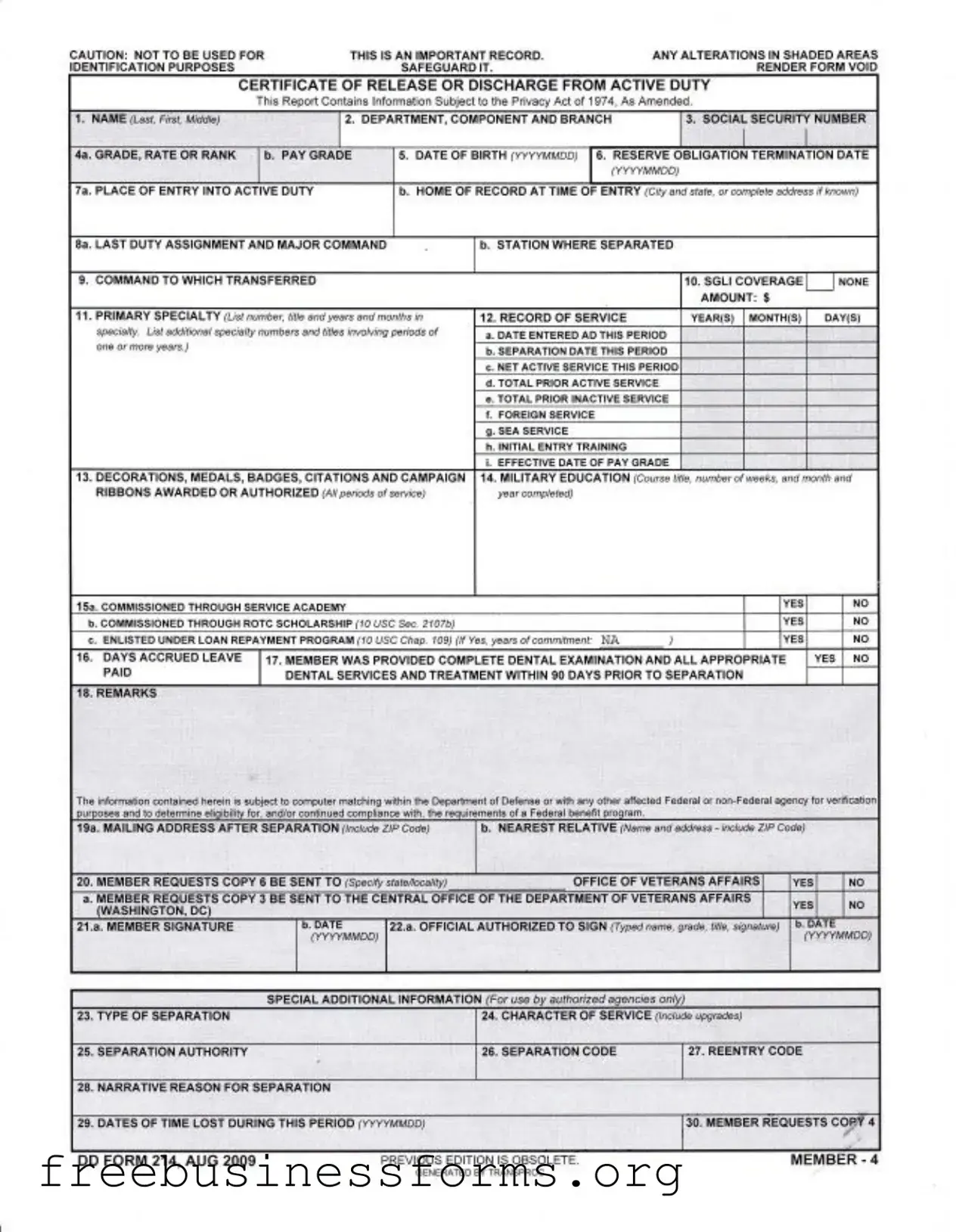The DD Form 214, officially known as the Certificate of Release or Discharge from Active Duty, serves as a crucial document for military personnel transitioning to civilian life. This form captures essential information about a service member's military career, including their branch of service, rank, and dates of active duty. It details the character of service, which can significantly impact a veteran's eligibility for various benefits. Additionally, the DD 214 includes information on awards, decorations, and any training received during service. It is important to note that this document is not intended for identification purposes and must be safeguarded to prevent unauthorized alterations. The form also outlines the member's home of record and provides a summary of their military education and service history. As such, the DD 214 is not just a record; it is a vital tool for veterans seeking to access benefits and services after their military commitment ends.

